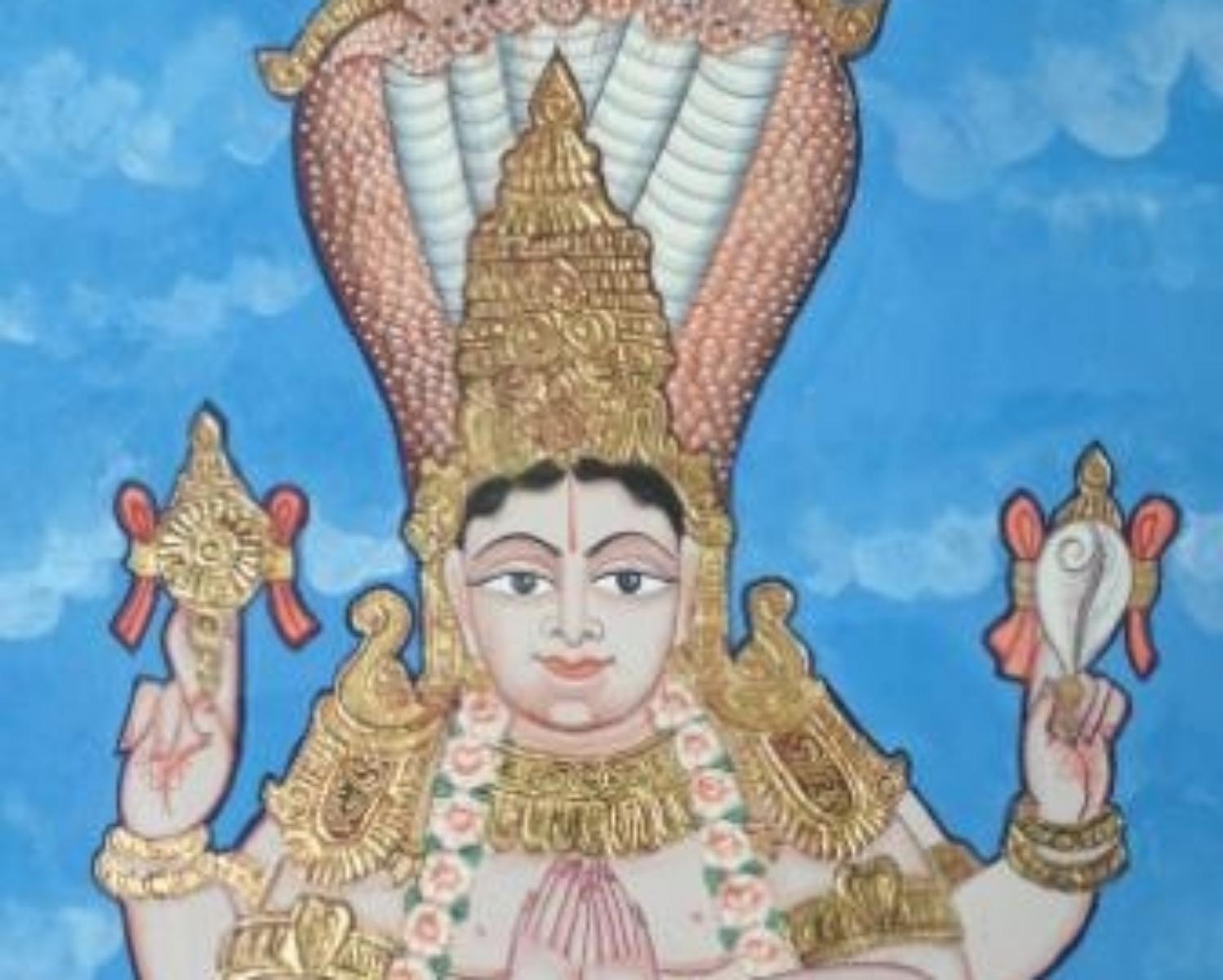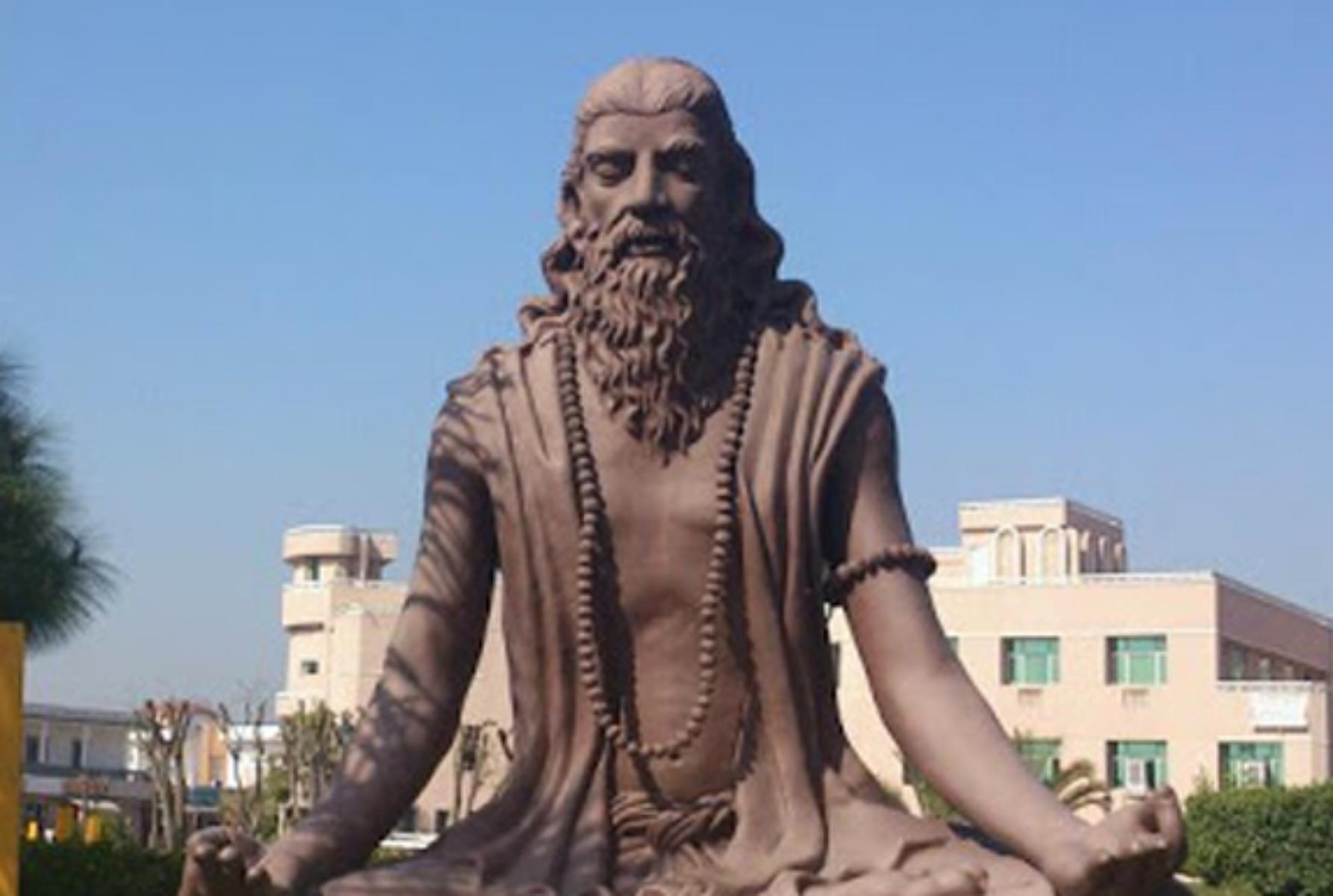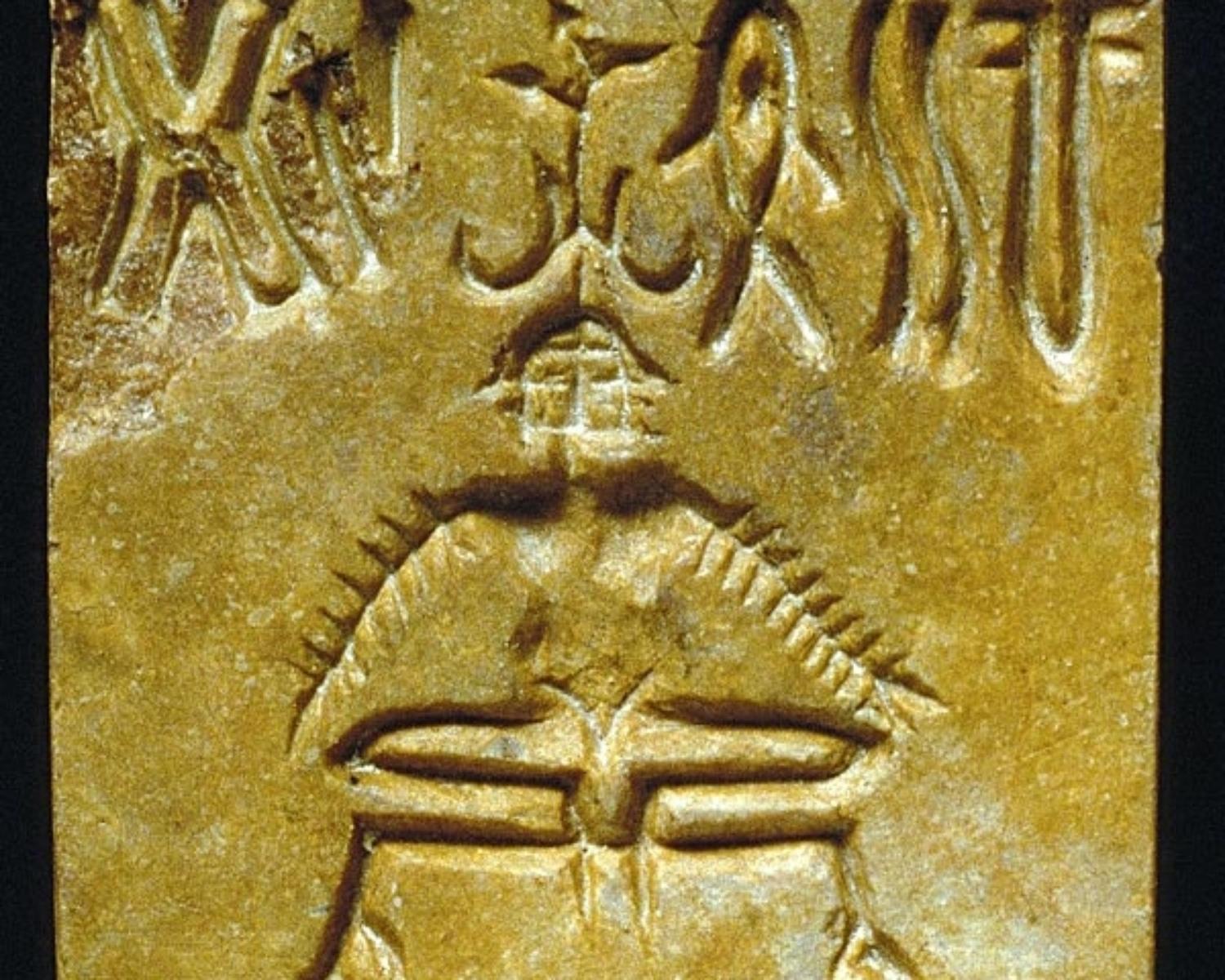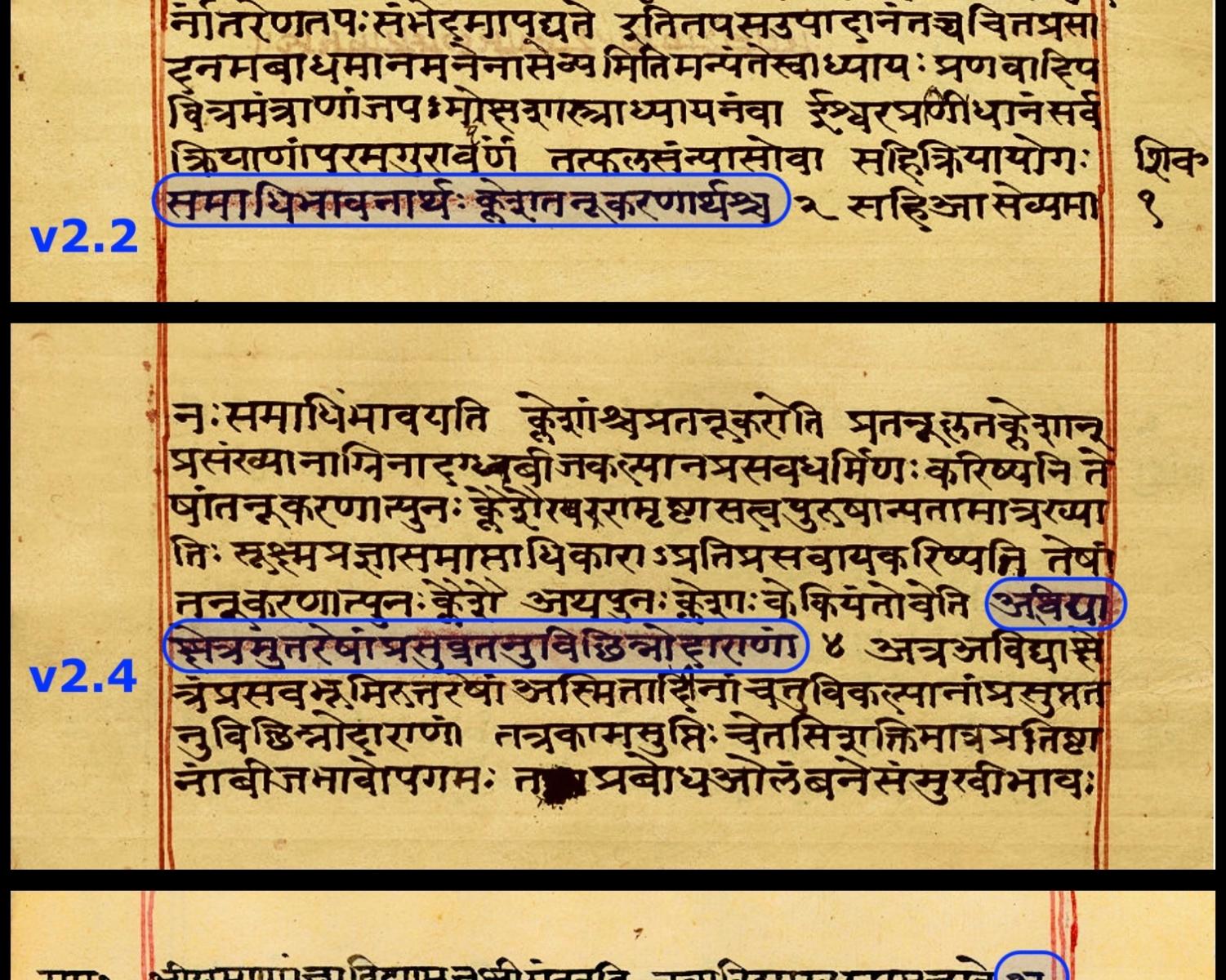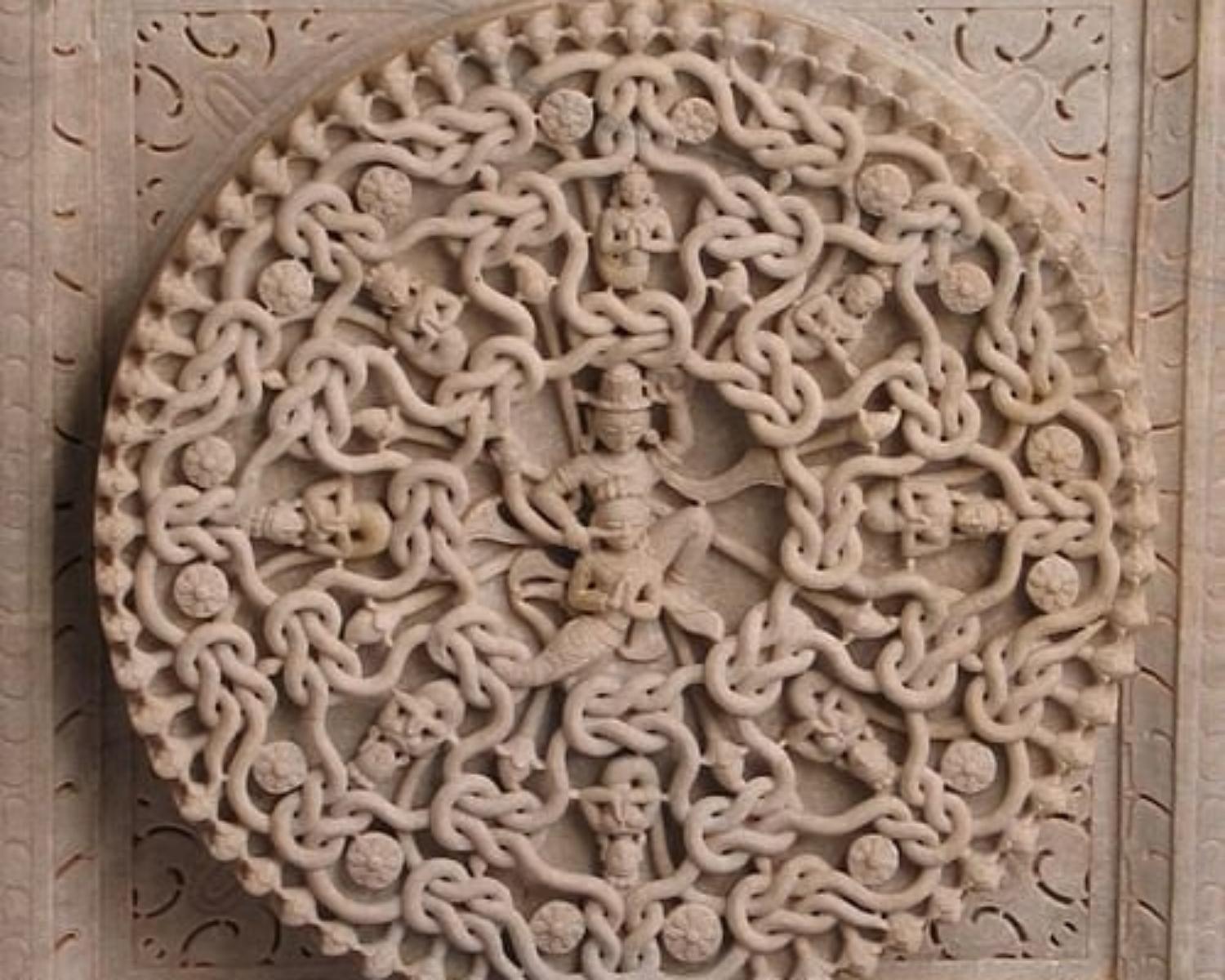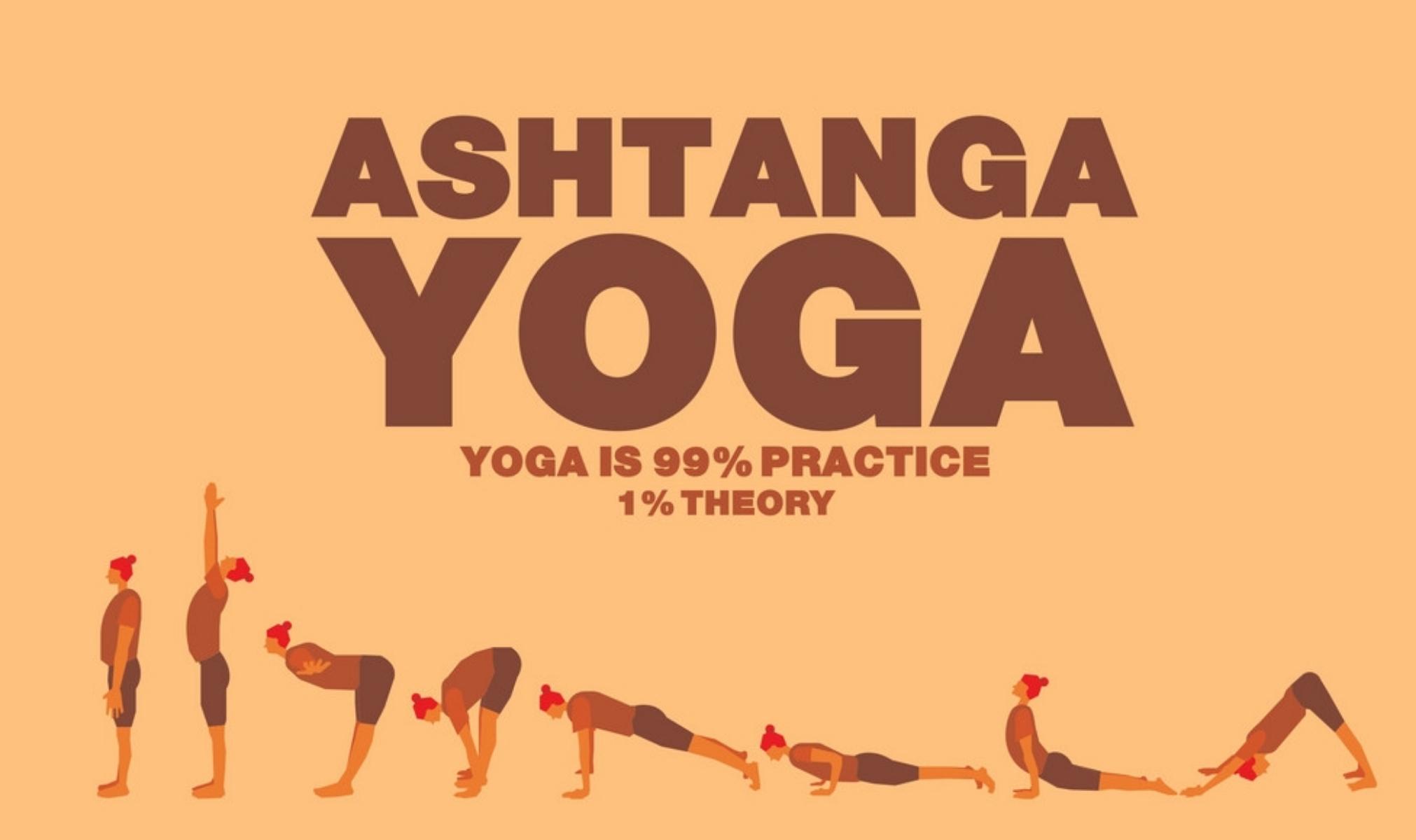Patanjali Yoga Sutras – Ancient Indian Wisdom
Curated from: ancientindianwisdom.com
Ideas, facts & insights covering these topics:
25 ideas
·1.53K reads
11
2
Explore the World's Best Ideas
Join today and uncover 100+ curated journeys from 50+ topics. Unlock access to our mobile app with extensive features.
6. Maharshi Patanjali
Patañjali was a sage in India who is believed to have authored a number of Sanskrit works, the most prominent of which is the Yoga Sutras, a classical yoga text dating to 200 BCE – 200 CE.
Though references to yoga within Hindu scripture had already long existed, it’s believed they were too diverse and complex for the general public, so Patanjali created the Yoga Sutras as a way of compiling already existing teachings into a format easier to follow and understand.
23
260 reads
A Popular story about the life of Patanjali,
There was a saintly woman Gonika, who attained the high truth, the highest knowledge, which she wanted to propagate for the well being of mankind. Hence, she was searching a right person for it. Once, offering a holy water to Sun, while praying, a small fish emerged in her palms and as the water dropped down, it turned into a human child figure. Thus as fallen from palms, he was named as Patanjali (Word – Patan – fallen down Anjali – Palms).
He was an incarnation of Shesha i.e. Hooded Cobra, having uncountable skulls (brains or centres of knowledge).
23
200 reads
Hiranyagarbha
As per Indian tradition of knowledge, the origin of Yoga is ascribed to the Hiranyagarbh, a celestial being. In Mahabharat (Shanti parva) Krishna states, ‘Acharyas call me as Hiranyagarbh who is lauded in the verses of Vedas,’ thus, Krishna indentifies himself with Hiranyagarbh. Narrator called him Yogaeshvar in Bhagvad Gita. Yoga-yajnavalkya Smruti describes Hiranyagarbh as original teacher of Yoga, just as Kapil, of the Samkhya system.The science of Yoga evolved for millennia of years, even prior to Patanjali. Vedic Rishis or Seers of hymns have recorded their own experiences and musings.
22
138 reads
Traditionally In Bharata
Traditionally, Yoga is a precious science of wholesome life, leading to liberation or ‘self realization’. The concept of Yoga has confined to a particular discipline, observed by handful ascetics i.e. Sanyasins, for their own goal of emancipation or self realization.Various rigorous practices like breath regulation, fasting, meditation, devotion to god, an austere and secluded life etc. cumulatively called Tapasya were practiced by them, mostly in the Himalayas.As a result Yoga was somehow alienated from the society as whole; and the number of practitioners of Yoga in society dwindled.
22
94 reads
Dimensions Of Yo
History has recorded the advancement of Yoga since Vedic days in different manners like verbal traditions, behavioral patterns of Yogais, scriptures, texts, carvings, caves, idols of gods and Seers. At present India and territories around, have a huge treasure of such records. Many literary records attest that Yoga existed since RgVedic time.
India being a Yoga-hub has rich collection of scriptures like Vedas including Upanishadas, Puranas ,Darshanas, Itihas (history), Dharma-grantha (Scriptures), etc. describing different dimensions of Yoga voluminously.
22
83 reads
Records Found In Indus Valley
As Yoga has a long history, it is hard to define the accurate chronological order of different scriptures or texts, with respect to time, verity of practices and components, etc.
Archaeological records found in Indus valley sites display some figures of ascetic postures like Padmasan etc,suggesting that Yoga was practised, well over4000 years.(this portion can be deleted if doesn’t suit)
India being a Yoga-hub has rich collection of scriptures like Vedas including Upanishadas, Puranas,Darshanas,Itihas (history),Dharma-grantha(Scriptures),etc.describing different dimensions of Yoga voluminously.
22
76 reads
Advancement Since Vedic Days
The science of Yoga evolved for millennia of years,even prior to Patanjali.Vedic Rishis or Seers of hymns have recorded their own experiences and musings. History has recorded the advancement of Yoga since Vedic days in different manners like verbal traditions, behavioral patterns of Yogais, scriptures,texts,carvings,caves,idols of gods and Seers.At present India and territories around, have a huge treasure of such records.
Nadbindupanishad – define Yoga as – To be indulged in listing a spiritual (anahat) sound while sitting in Siddhasan is said to be Yoga.
22
53 reads
What Upanishads Says
Yogatatvopnishad – Describe four types of Yoga – Mantra (recitation), Lay, Hath and Raj.
Amrutnadopnishad – describe 6 limbs of Yoga – Pratyahar, Dhyan, Pranayam, Dharana,Tark( logical thinking) and Samdhi. One remarkable statement is found in this Upnishad. It states that Ashitihi shat Shatam chaiv sahstrani trayodash lakchaiko-pi nih-shvasah ahoratr prmantah – 34. It means in 24 hrs we breath 1,13, 600 it means we breath around 78 times / minute.(Normal breath rate is around 15 to 18 /minute according to western as good as eastern health sciences) It seems author is mentioning about
24
65 reads
...
pulse rate, as further it says Pranvayu (life energy) is of Red color.
Dhyanbindopnishad– describes different mudras, pranayam with location and functions of different Nadis (life force carriers), bandhas, meditating upon Vishnu, contemplating on Aumkar (pranav).
Yogatatvopanishad– It mentions that individual being has many limitations or demerits like – craving, shyness, fear, anger, laziness, hunger, etc which can be overcome only by practice of Yoga of different kinds as HathYoga, LayaYoga, MantraYoga and RajYoga.
23
54 reads
What Puranas Says
There are number of Puranas describe Yogaic concepts directly or indirectly and following are some selected descriptions about Yoga.
Agni Puran – defines Yoga – ‘To know Brahman in total is Yoga’. The technique to conquer senses by knowledge, renunciation and Pranayam.
Kurma Puran–describes two types of Yoga – Abhav and Braham
Garuda Puran–mentions about three types of Yogai–Bhautik, Kshatr (warrior) and Anthyashrami.
Vishnu Puran–defines Yoga–‘To unite that power of Mind(Chitta) to Brahman is called as Yoga’.
Shiva Maha puran– states about MantraYoga, sparshaYoga, BhavYoga, AbhavYoga and MahaYoga
22
47 reads
The major characteristic features of Patanjal Yoga sutras are:
1) Popular Darshan – Patanjali Yoga is sacred Darshan, authored by Sage Patanjali. Darshan is philosophical system.‘ It means perception of ‘truth’ through pure mind and intellect together (reasoning). Those are not mere collection of information and descriptions but are the essence of direct perception or experiences of Seers or Rishis.
2) Chief aim is to describe Yoga i.e. science of Self-realization or liberation.
3) A Complete condensed set of principles and techniques of Yoga.
22
47 reads
....
Divided in 4 chapters –
Samadhi pad — 51 Aphorisms
Sadhan pad – 55 Aphorisms
Vibhuti pad – 55 Aphorisms
Kaivalya pad – 34 Aphorisms
4) Focus on–Chitta(causal mind)as cause and end both, for the Klesh(pain).
Many ways and means to rule out Klesh and attain complete sense of contentment,are helpful in stress,depression,anxieties,etc.
5) ‘Sarvabhaumtva’– i.e.Practices transcend the conditions like class, time, place, period,etc.
6) Abhyas(constant practice) and Vairagy(dispassion),Ishwarpranidhan – through pursuing Aum, path of 8 limbs,Pratipakshbhavana, etc are important practices towards Liberation.
24
38 reads
Patanjali Yoga Sutras
Patanajali Yoga sutra has both oral as well as textual tradition of Yoga. It is acknowledged by traditional Vedic schools as the authoritative source on Yoga. It is bouquet with everlasting fragrance, contrast to its modern western transplanted forms, containing classical Indian ideas about: Definition of Yoga, Features of Chitta (causal mind) and its modifications, the techniques and practices of restraining Vritties and meditation, culminating into super consciousness.
22
31 reads
Mechanisms of ‘karma‘ or action in the world:
here and hereafter (consequent rebirth) and the metaphysical foundation and description leading to mystical powers. Different spiritual powers as a result of Yogaic practices and how to renounce them while leading Liberation.
Considering available space here, it is difficult even to enumerate all the 195 sutras: aphorisms, so let us have glance at some important aphorisms (especially those are applied part) and subjects dealt in sets of aphorisms in different chapters.
23
33 reads
Yoga Vashishth
Vashishth muni defined Yoga in Yoga-vashistha as – technique of conquering world.
Gita defines it as: equanimity is Yoga. Many such definitions are seen in philosophical works. Patanjali’s definition strikes directly to the core of the subject. In next sutra, he states that when one can inhibit such modifications, he or she would attain Self or fundamental character (spirit).
Then the ‘Drashta‘ i.e. seer realizes or establishes in his own vital or fundamental character (spirit) or Brahman.
Yogavasistha a discussion about liberation between Rev.
22
26 reads
Realization Of Self Character
When an actor is playing some dramatic role and has a makeover, it is difficult to recognize him or her, but when the makeover and drapery is put off, it is very easy to notice the person. In the same way, when a seer is not associated with any Vritti, he or she can realize his or her Self or fundamental character.
An actor can put off the makeover within couple of minutes, but it is not easy to dissociate or restraint Vrittis. It takes a long time, even many lives to realize ‘Self’. Patanjali has prescribed two chief instruments of this restraint
22
30 reads
‘Abhyas’ and ‘Vairagy’
are those two chief means of restraint (self-restraint).Abhyas means a persistent repeated practice (of anything). Vairagy is disinterestedness and dispassion.
Patanjali further describes these two faculties as: Endeavor to settle in that (self or fundamental character) state, is Abhyas or in state of Chitta vritti nirodh
Patanjali has mentioned two levels or types of Vairagy –
Vahsikar Vairagy – A perfect mastery over craving towards any object (or subject) either tasted (experienced) or not.
22
30 reads
Par Vairagy
Par Vairagy – It is highest level of non-desire, even for the virtues (possible only), when one attains the ultimate ‘Purush’ i.e. supreme being.
By explaining different levels of Samadhi, obstacles to the same and some very effective techniques to overcome them, especially ‘Ishwar-pranidhan Patanjali has defined the destination of whole mission or journey.
22
26 reads
Ch -2 Sadhan pada
– deals with different techniques and disciplines to be persuaded as to achieve the goal: Samadhi.
In this chapter, he states the Kleshas(psychological dispositions)are the cause of pain experienced by an individual and which ultimately leads to an endeavour for overcoming the same.He assures that, Ashtang Yoga is a perfect set of instruments to eradicate the Avidhya(a chief Klesha– idea contradicting to truth).
The perfect awareness of Purush the fundamental reality is attained, when spiritual illumination arises after eradicating all impurities, by practicing eight limbs of Yoga.
22
24 reads
Ashtang Yoga
Ashtang Yoga –Yam, Niyam, Asan, pranayam, pratyahar,Dharana, Dyan and Samadhi are eight limbs of Yoga.
Ashtang Yoga is complete set of 8 instruments, which are called as Angas (limbs). Though Patanjali has put them in a sequence, it doesn’t mean that it is to be practiced one after the other, each limb has its own separate as good as collective significance. The whole set is divided in two parts, Bahirang and Antarang. It is general convention that, first five Limbs i.e. Yam, Niyam, Asana, Pranayam and Pratyahar form a Bahirang and last three limbs i.e.Dharana, Dhyan and Samadhi form Antarang.
24
26 reads
The 5 Disiples For Good Relati
But some scholars, Acharyas consider Pratyahar as a part of Antarang. Bahirang means exterior set of limb and Antarang is an interior set, having their own features as –
Limb 1 – five yamas
Components of Yama:Ahinsa, Saty, Astey, Brahmacharya and Aparigraha are five Yamas
Five disciplines to be observed to maintain good and harmonious relations to all other constituents of universe. Ahinsa= Non violence, Saty= observance of truth, Astey= non stealing, Brahma-chary = celibacy and A-parigraha= abandoning collections or gifts.
22
27 reads
5 Niyams , Asan , Pranayam , Pratyahar
Limb 2 – five niyams
Shauch = Purity, 2. Santosh= Satisfaction, 3.Tapas=Penance, 4. Swadhyay= Self study and 5. Ishwar-pranidhan= Contemplation on god are five Niyams.
Limb 3 – Asan
Asan (posture) is to remain steadfast and at comfort.
Limb 4 – Pranayam
After it, (attaining posture), there is possibility of cessation of inhalation and exhalation of breath.
Limb 5 – Pratyahar
Pratyahar is to withdraw sense organs from their respective objects of pleasure.
22
27 reads
Ch -3 Vibhuti pada
– deals elaborately with Sanyam or Antaranag Yoga and different spiritual achievements as result of it.
Limb 6 – Dharana
Dharana is confinement of causal mind in particular area (object)
Limb 7 – Dhyan
Meditation is uninterrupted flow (of mind) towards one and single object.
Limb 8 – Samadhi
When there remains only a consciousness of object of meditation (not of anything else) is Samadhi.These three together is Sanyam.
22
21 reads
Ch -4 kaivalya pada
– deals with the law of Karm or action, effects of passions here and hereafter, Jivanmukti and Videhamukti the two states of liberation.
22
46 reads
Conclus
The perfect awareness of Purush the fundamental reality is attained, when spiritual illumination arises after eradicating all impurities, by (persistent) practicing eight limbs of Yoga.
Vasishth Muni and Bahgwan Shriram define Yoga as –" Yoga is that skill which makes one i.e. Jiv (easy) to conquer (mundane) world."
22
32 reads
IDEAS CURATED BY
卐 || एकं सत विप्रा बहुधा वदन्ति || Enthusiast || Collection Of Some Best Reads || Decentralizing...
अर्हम् Arham's ideas are part of this journey:
Learn more about mindfulness with this collection
The benefits of a ketogenic diet
The science behind the ketogenic diet
The potential risks of a ketogenic diet
Related collections
Similar ideas
Read & Learn
20x Faster
without
deepstash
with
deepstash
with
deepstash
Personalized microlearning
—
100+ Learning Journeys
—
Access to 200,000+ ideas
—
Access to the mobile app
—
Unlimited idea saving
—
—
Unlimited history
—
—
Unlimited listening to ideas
—
—
Downloading & offline access
—
—
Supercharge your mind with one idea per day
Enter your email and spend 1 minute every day to learn something new.
I agree to receive email updates

